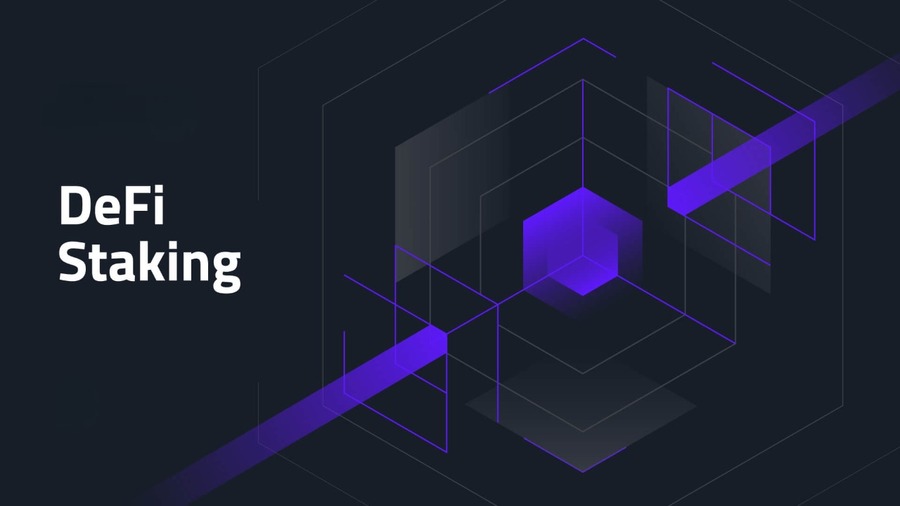Decentralized Finance (DeFi) is revolutionizing the traditional finance industry by enabling peer-to-peer transactions, eliminating intermediaries and providing more financial freedom. One of the popular aspects of Decentralized Finance is staking, which is the process of holding and locking up cryptocurrencies to receive rewards. In this article, we will explore the basics of Decentralized Finance staking and how you can get started with it.
What is Decentralized Finance Staking?
Decentralized Finance staking is the process of holding and locking up your cryptocurrencies in a smart contract, which secures and validates the blockchain network. In return for staking your tokens, you receive rewards or interest, which are distributed proportionally based on the number of tokens you have staked.
How does Staking Work?
Staking works by locking up your tokens in a smart contract, which is a self-executing contract that enforces the terms and conditions of the agreement between the parties involved. The smart contract runs on a blockchain network, which is secured by the stakers who validate the transactions and maintain the network.
When you stake your tokens, you become a validator on the blockchain network, and you are responsible for verifying and validating transactions. The network rewards you for your participation in securing and maintaining the network. The rewards can be in the form of tokens or interest, and they are distributed proportionally based on the number of tokens you have staked.
Advantages of Staking
There are several advantages of staking in Decentralized Finance, including:
- Passive income: Staking provides a passive income stream by earning rewards for holding your tokens.
- Network security: Staking helps to secure and validate the blockchain network, ensuring its reliability and security.
- Decentralization: Staking promotes decentralization by incentivizing participants to hold and secure the network.
- Reduced volatility: Staking reduces the volatility of the cryptocurrency market by encouraging long-term holding of tokens.
Different Types of Decentralized Finance Staking
There are different types of staking in Decentralized Finance, including:
- Proof of Stake (PoS): PoS is a consensus algorithm that uses staking to secure and validate the blockchain network.
- Liquidity staking: Liquidity staking is the process of providing liquidity to decentralized exchanges (DEXs) and earning rewards for doing so.
- Yield farming: Yield farming is a form of staking that involves locking up multiple cryptocurrencies in different protocols to earn rewards.
How to Get Started with Decentralized Finance Staking
To get started with staking, you need to follow these steps:
- Choose a reliable staking platform: There are several staking platforms available in the market, and you should choose one that is reputable, secure and provides good rewards.
- Select your tokens: You need to select the tokens you want to stake, considering their liquidity, volatility, and potential rewards.
- Set up your wallet: You need to set up a wallet that supports staking, such as Metamask, Trust Wallet or Ledger.
- Stake your tokens: Once you have set up your wallet, you can stake your tokens on the staking platform by following their instructions.
- Monitor your rewards: You can monitor your rewards by checking your wallet balance or the staking platform dashboard.
Risks of Staking
Although staking provides several advantages, it also carries some risks, including:
- Network attacks: The network can be vulnerable to attacks, which can result in loss of funds or rewards.
- Market volatility: The market is volatile, and the value of your tokens can fluctuate, resulting in a loss of value.
- Smart contract risks: Smart contracts can have bugs or vulnerabilities, which can result in loss of funds or rewards.
- Slashing: Validators can be penalized for misbehaving, such as double-spending or manipulating the network.
- Impermanent loss: Liquidity staking can result in impermanent loss, which is the difference between the value of your tokens when you staked them and their value when you withdraw them.
Best Practices for Decentralized Finance Staking
To minimize the risks of staking, you should follow these best practices:
- Do your research: Before staking, research the staking platform, the tokens you want to stake and their potential rewards.
- Diversify your portfolio: Don’t stake all your tokens in one platform or protocol. Instead, diversify your portfolio to minimize the risks.
- Use a secure wallet: Use a wallet that supports staking and is secure, such as a hardware wallet or a non-custodial wallet.
- Keep track of your rewards: Monitor your rewards regularly and withdraw them when necessary to avoid slashing or impermanent loss.
- Stay up-to-date: Stay informed about the latest developments and updates in the staking ecosystem to make informed decisions.
Conclusion
DeFi staking is a popular and lucrative way of earning passive income by holding and locking up your tokens in a smart contract. Staking helps to secure and validate the blockchain network, promote decentralization and reduce volatility. However, staking also carries risks, such as network attacks, market volatility, smart contract risks, slashing, and impermanent loss. To minimize the risks and maximize the rewards, you should follow the best practices for staking and stay up-to-date with the latest developments in the staking ecosystem.
I’m a Crypto author and I have written for some of the most popular Crypto publications. I have also been interviewed by leading Crypto media outlets. My work focuses on providing accurate and actionable information to help people invest in Bitcoin and other digital currencies.
I have over 10 years of experience in the financial sector, and hold a degree in Economics from the University of London.
